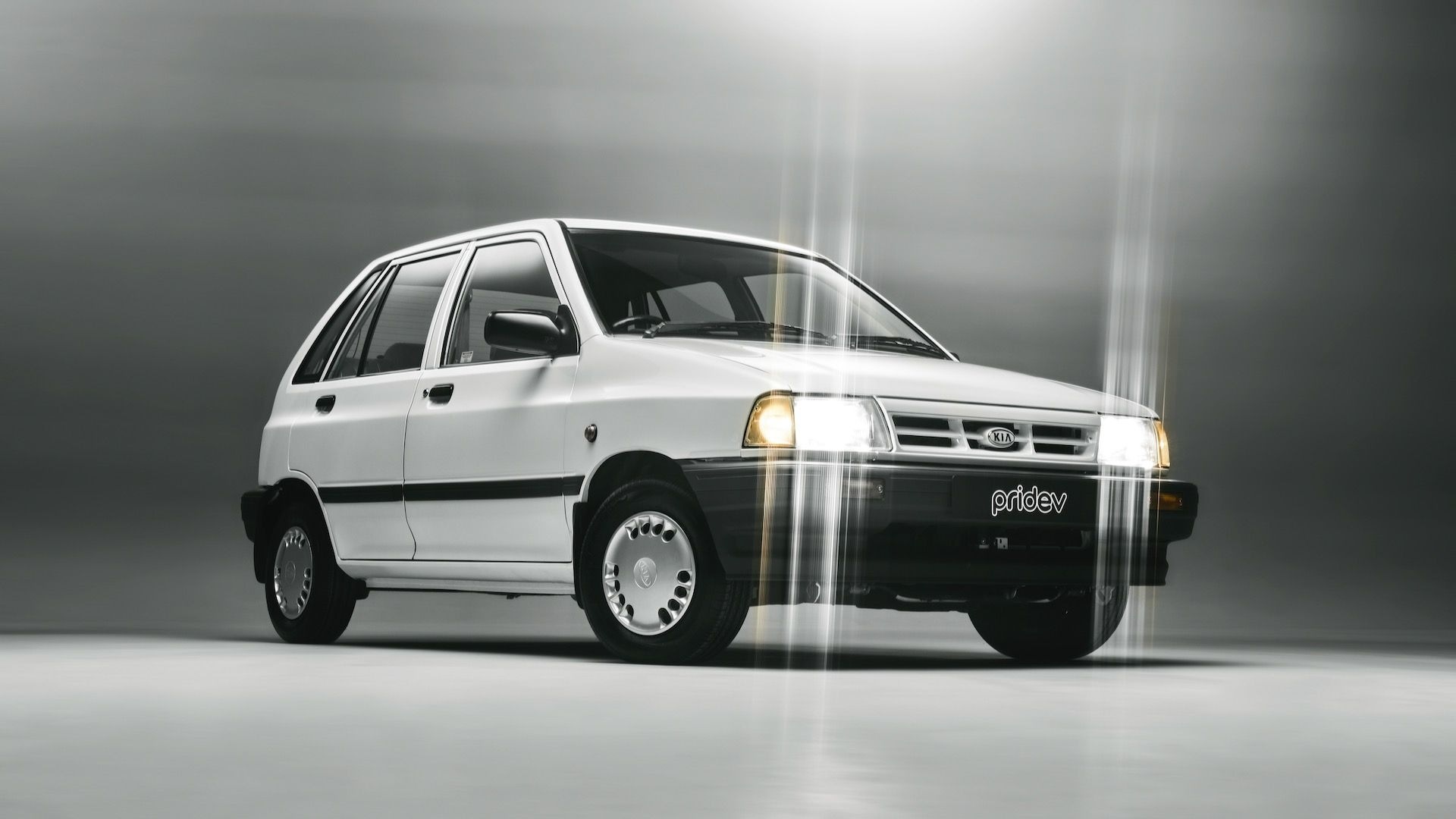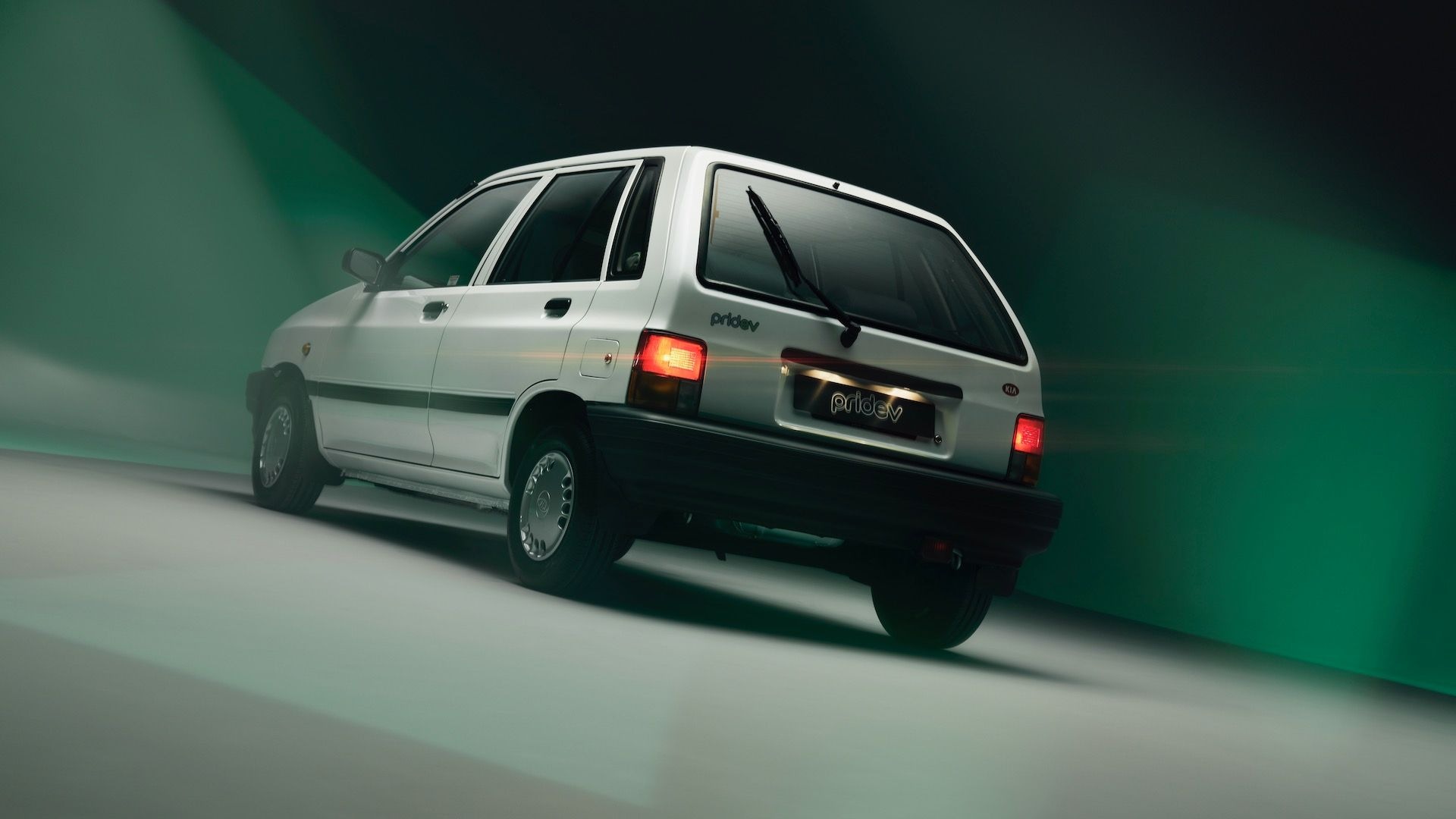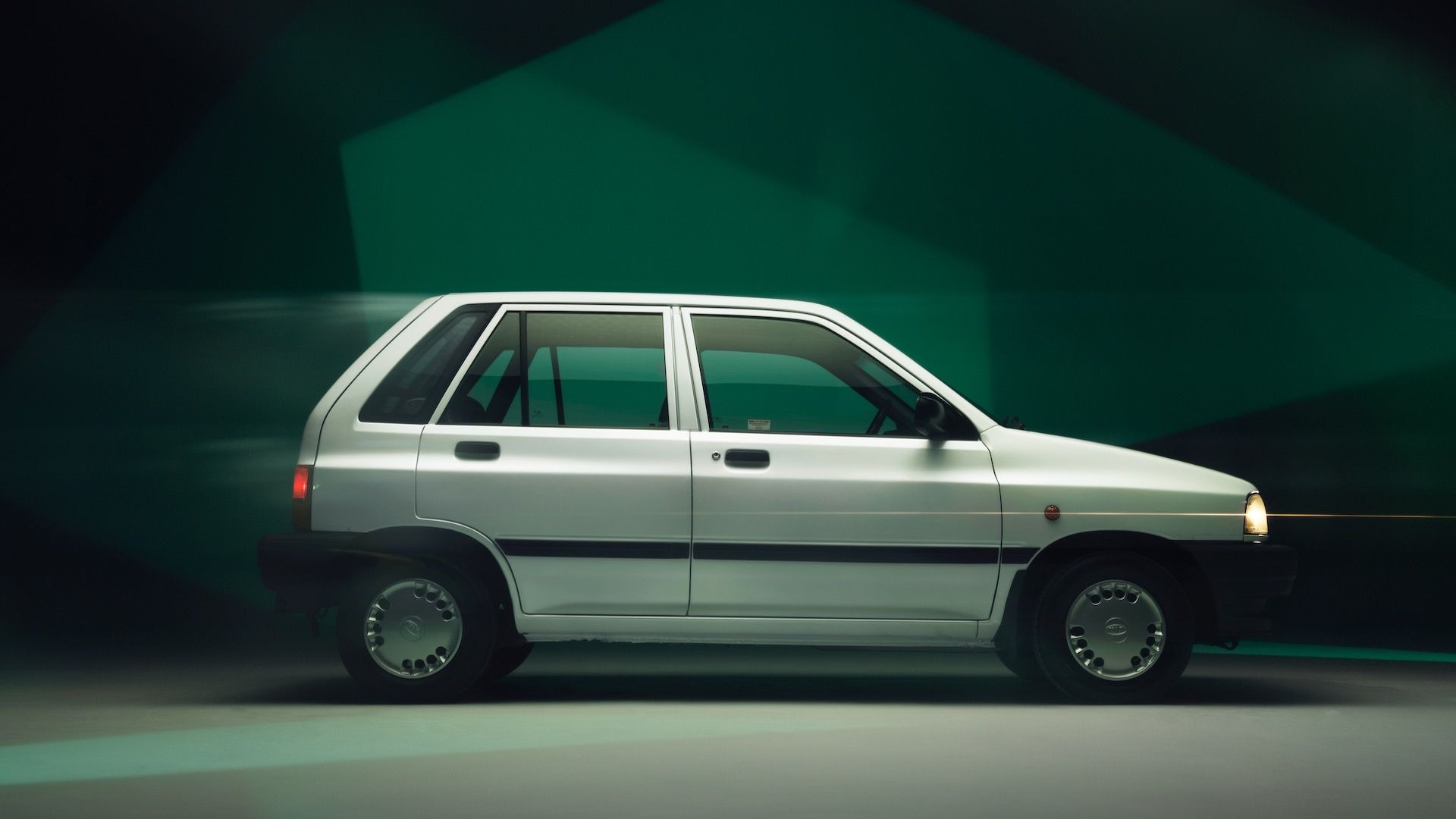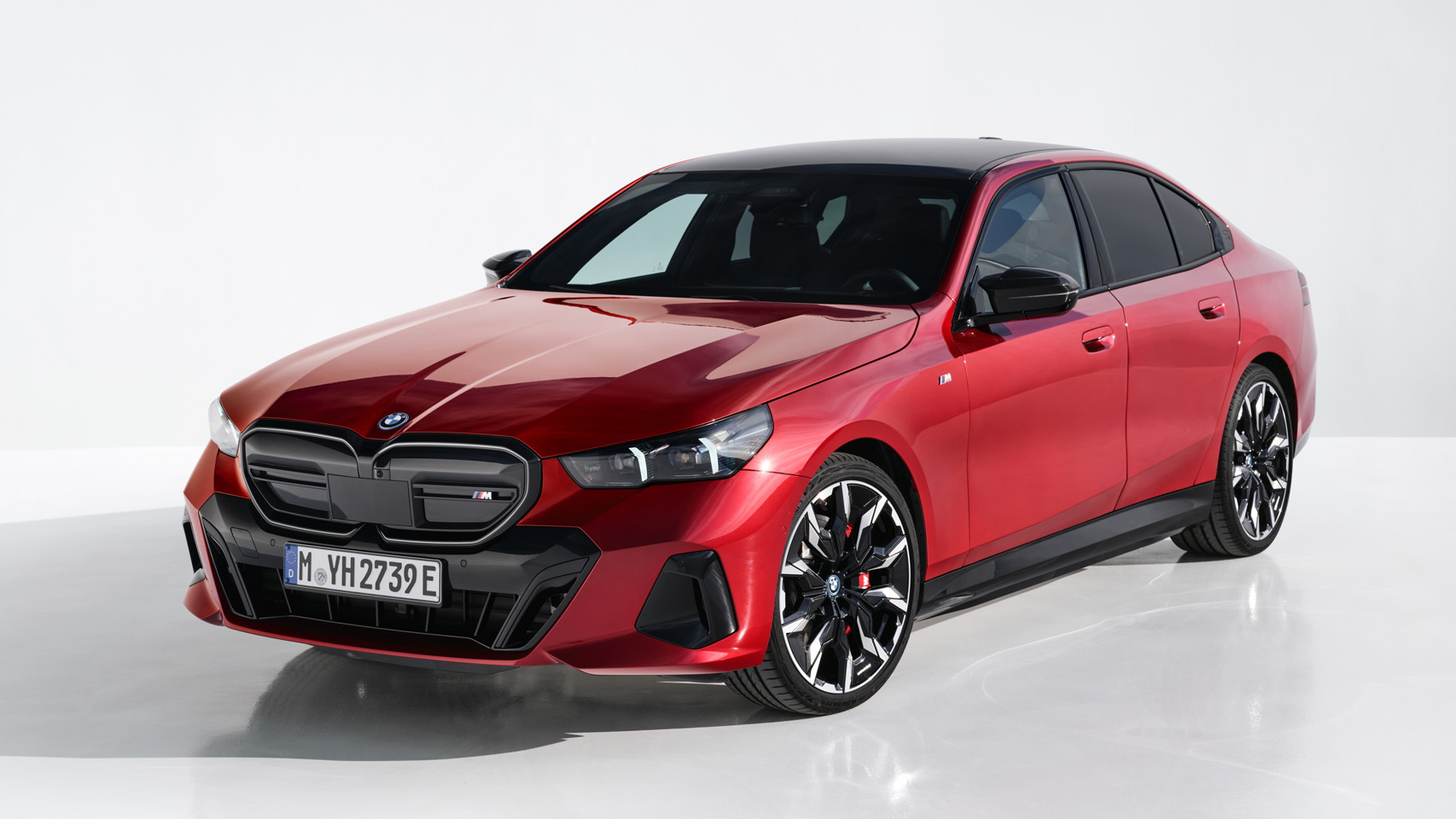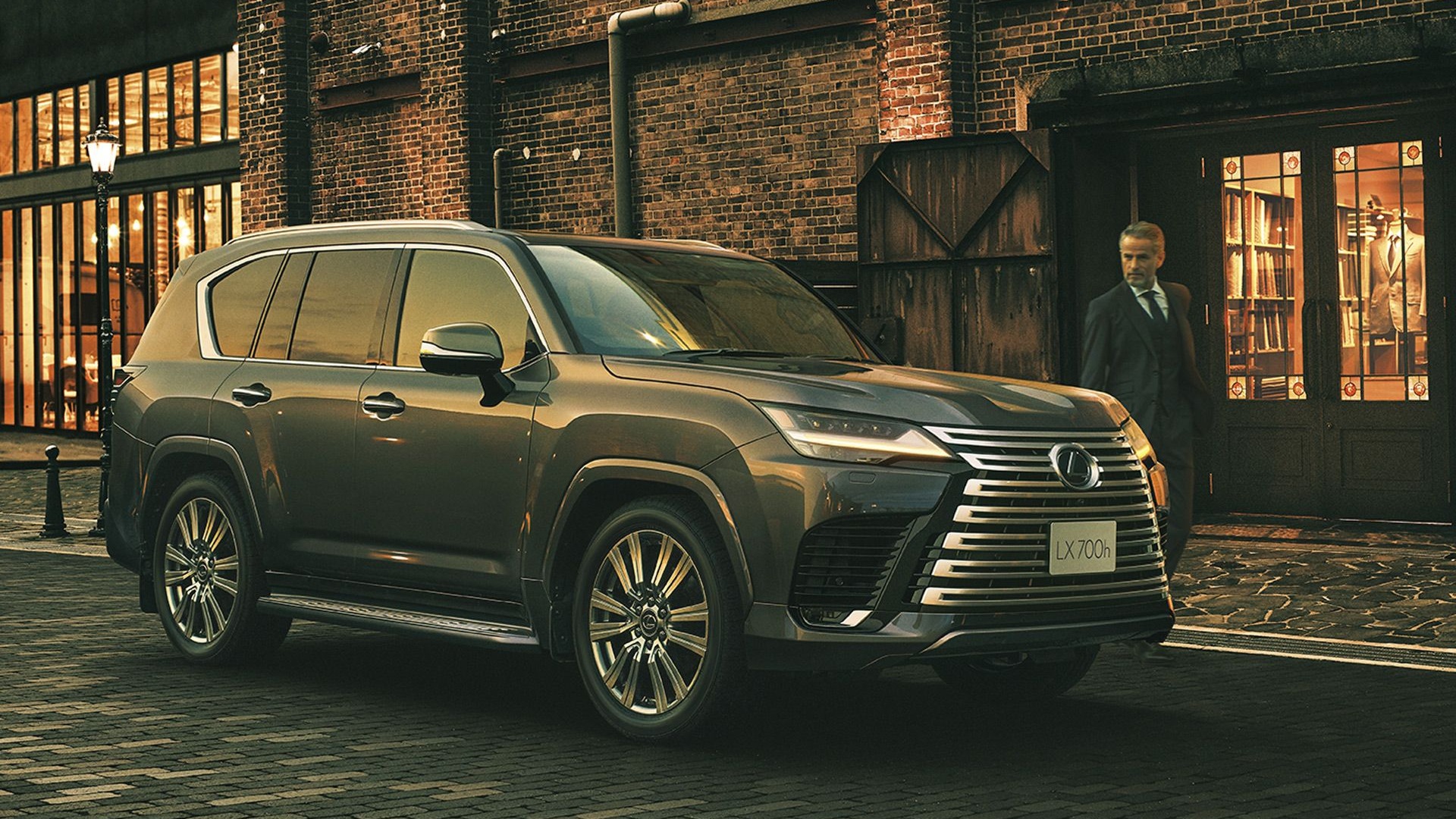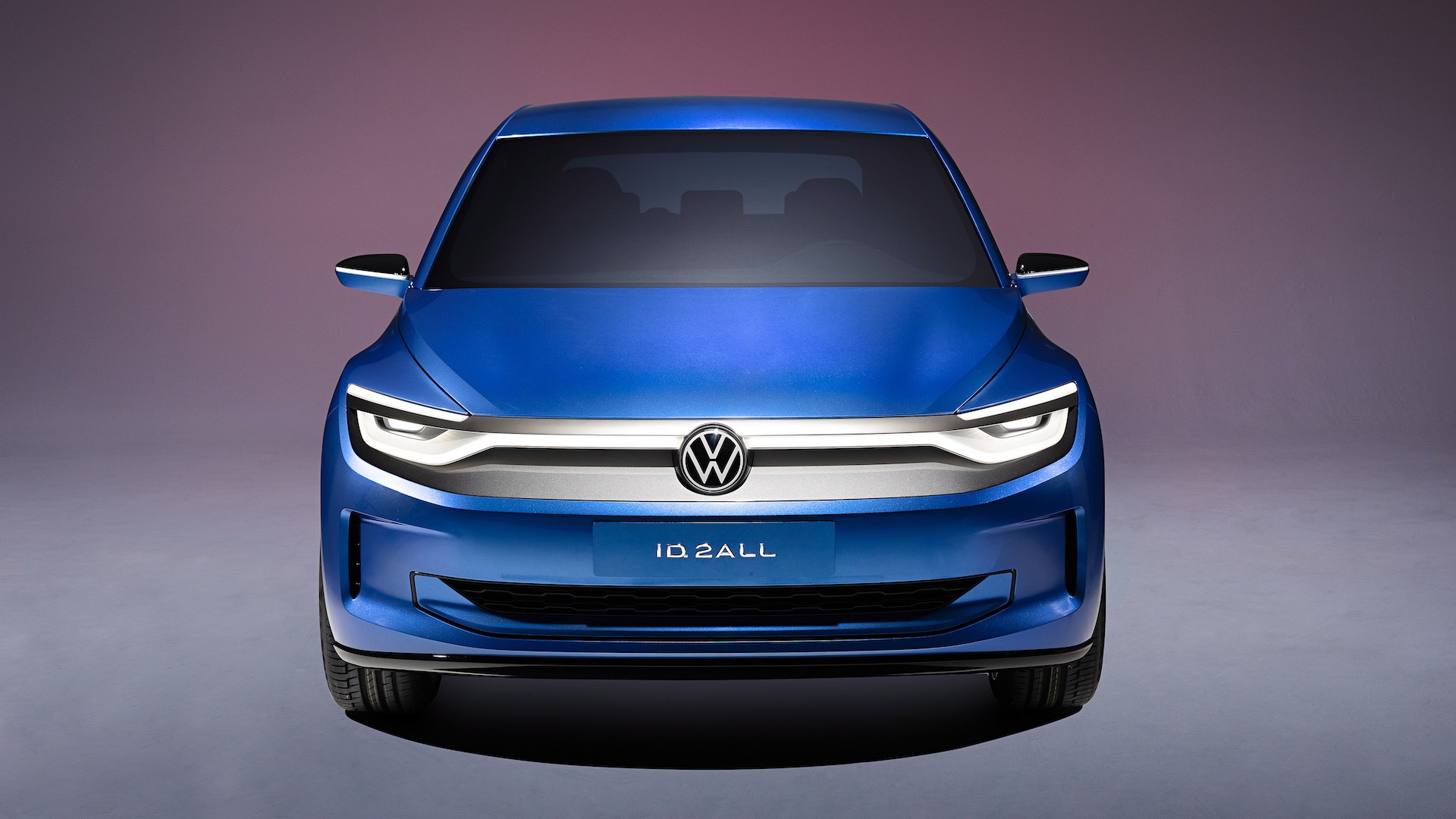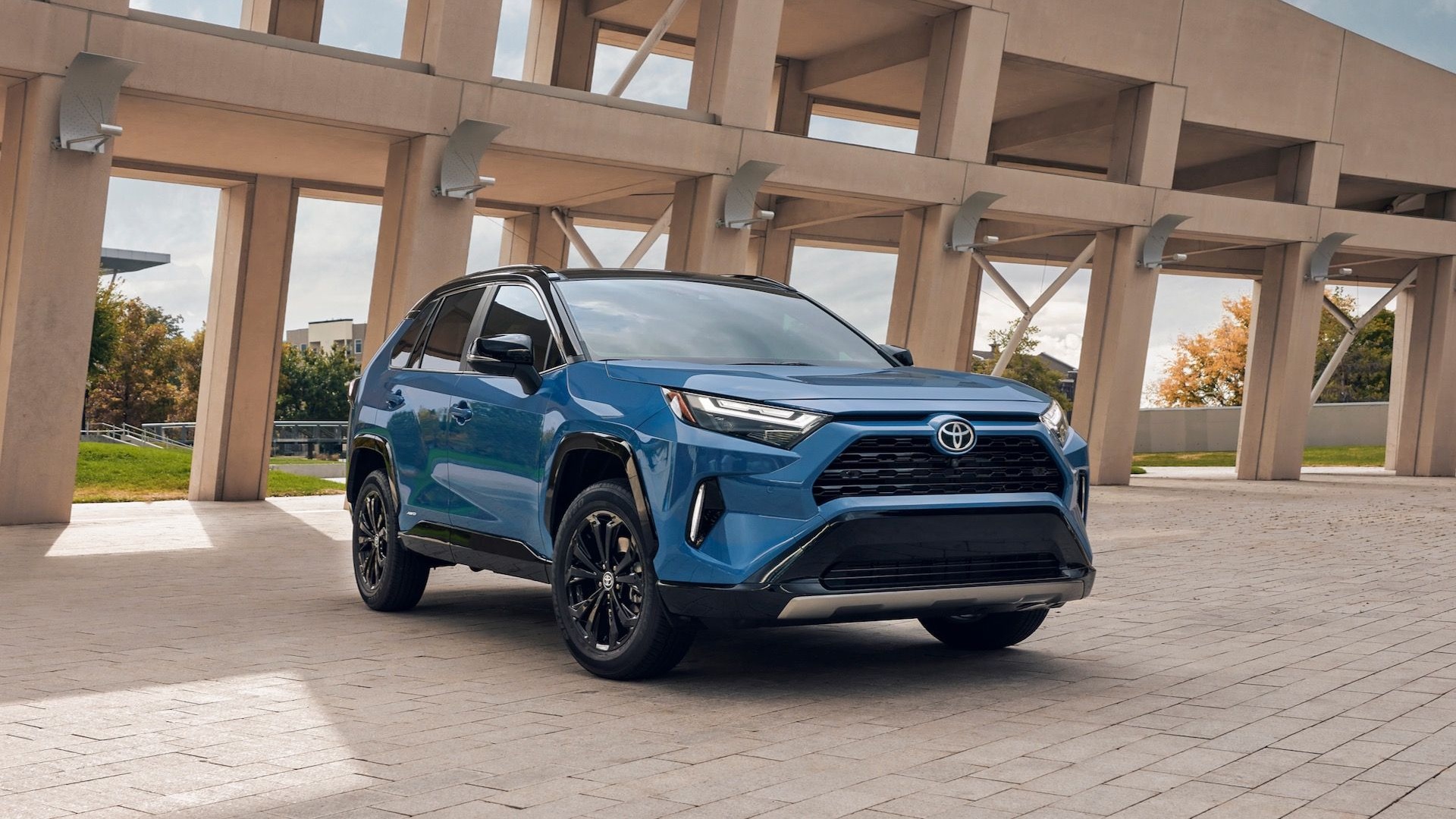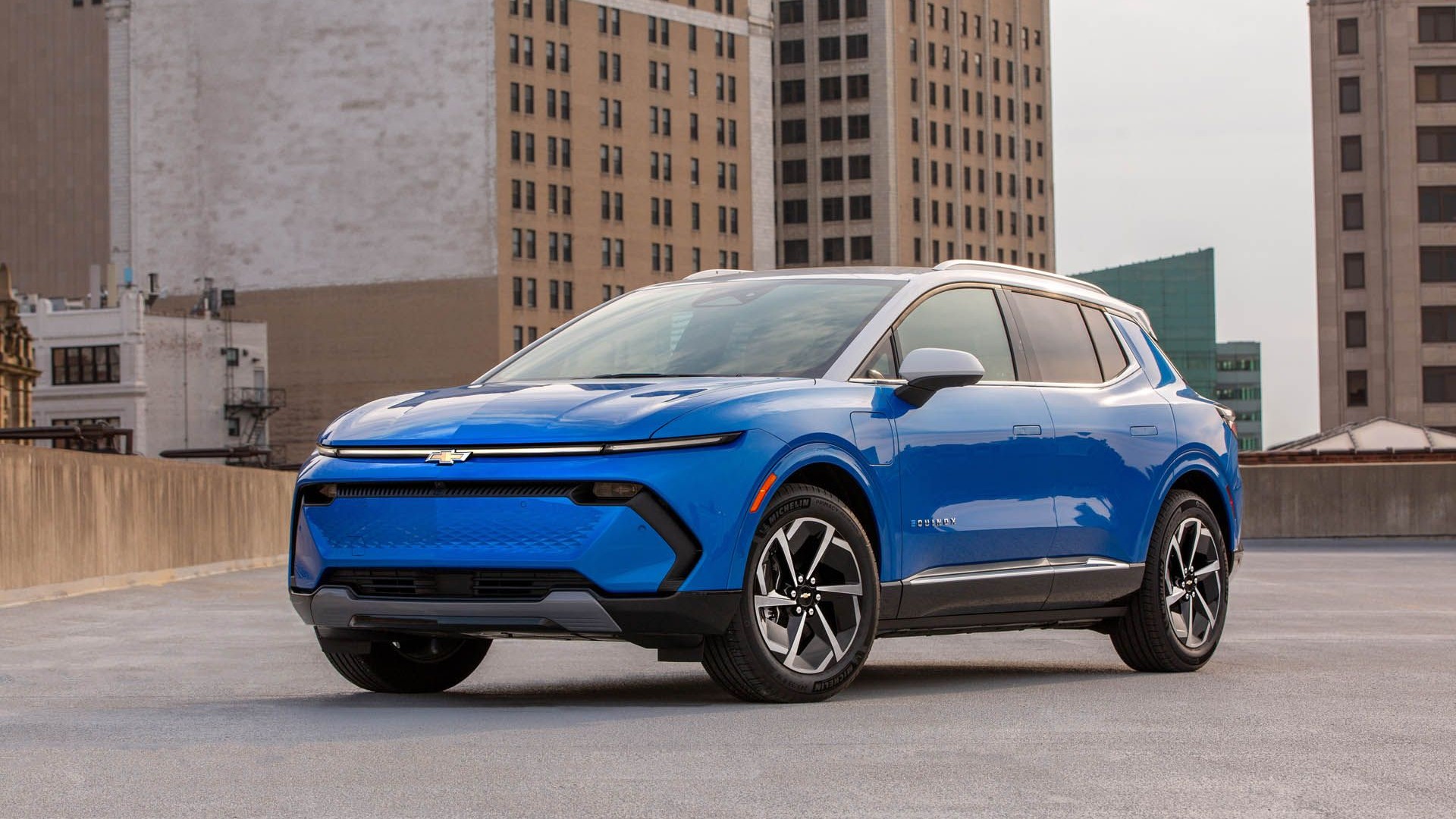- Kia is celebrating its 80th anniversary
- The automaker commissioned an electric conversion of its Pride hatchback
- A pair of 10-kwh batteries provide up to 120 miles of range in the restomod
Kia turns 80 this year, and to celebrate the automaker's U.K. division commissioned an electric restomod of a humble Pride hatchback.
The EV conversion was done by Electrogenic, a U.K. firm that specializes in fitting classic cars like the Citroën DS with electric powertrains. The Kia Pride doesn't have the stature of the DS, but it was a very important car for Kia.
While the company was founded in 1944 as a bicycle parts manufacturer named Kyungsung Precision Industry (the name was changed to Kia Industries in 1952), and built its first car (the Kia Brisa) in 1974, the Pride was what gave Kia an international presence. Based on a Mazda design, it was sold in the U.S. as the Ford Festiva from model years 1988 to 1993, and reached the U.K. with Kia badging in 1991.
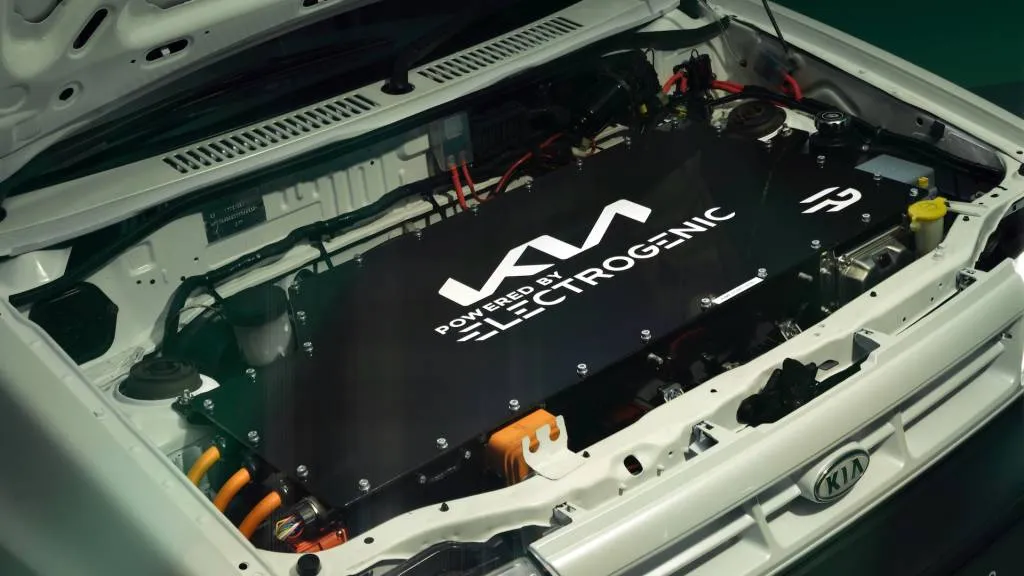
1996 Kia Pride EV conversion
The donor car was a 1996 Kia Pride 1.3 LX five-door hatchback from Kia's U.K. heritage fleet. The exterior is original—down to the tiny 12-inch wheels—and no permanent alterations were made to the structure, according to Electrogenic, allowing the conversion to be reversed if desired.
However, replacing the 1.3-liter inline-4 with an electric motor nets a substantial increase in power. The gasoline engine made 60 hp and 87 lb-ft of torque, but the Pride EV now boasts 80 hp and 130 lb-ft in its default Auto drive mode and 107 hp and 173 lb-ft in Sport mode, cutting the 0-62 mph time from the original 19.8 seconds to a more reasonable time of approximately 8.0 seconds. An Eco mode, matching the output of the gasoline engine, is also available.
Power is still sent to the front wheels through the original 5-speed manual transmission, which was rebuilt with a performance clutch to handle the extra torque from the electric motor. Eco and Sport modes limit regenerative braking so drivers can make better use of the manual, according to Kia, while Auto mode features more regeneration and a driving feel more like that of a conventional EV.
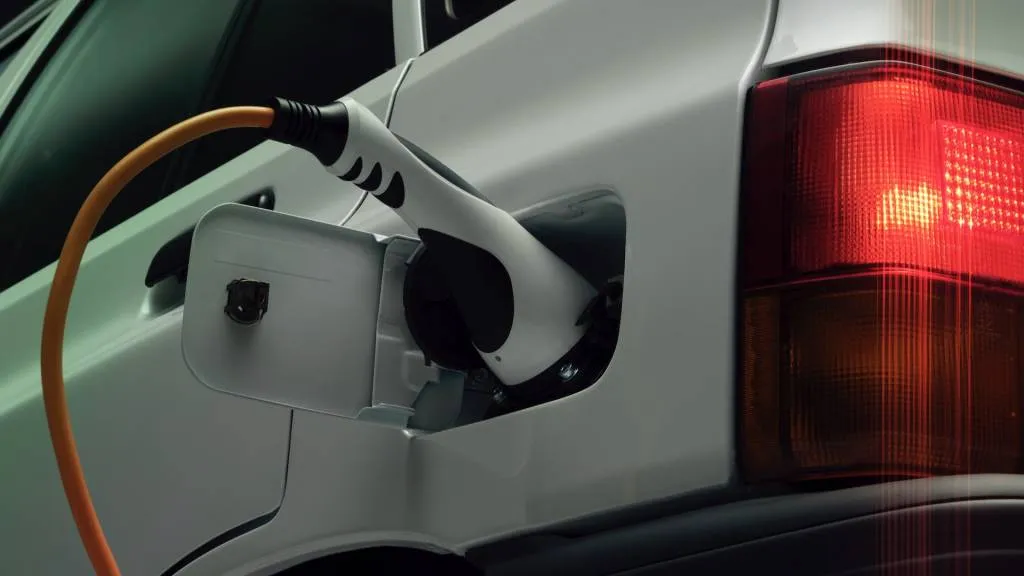
1996 Kia Pride EV conversion
A pair of 10-kwh battery packs—one under the hood and one underneath a slightly raised cargo-area floor—provide up to 120 miles of range. That's when being driven "sensibly" in Eco mode, Kia notes. A 3.3-kw charger, with its port hidden under the stock fuel filler flap, can complete a full recharge in around six hours.
Even with the pair of battery packs, the Pride EV weighs just 1,918 pounds, compared to 1,873 pounds for the stock version. It's another indication that, while keeping weight in check with EV conversions is difficult, it's not impossible. U.K.-based Bedeo has also claimed its Land Rover EV conversions don't pack on pounds.
Kia isn't the only automaker to resurrect a car from its formative years as an EV restomod. Parent Hyundai has done the same with a Pony hatchback—its first in-house design—and its 1980s Grandeur flagship sedan. In 2023 a group of apprentices at Audi's Neckarsulm, Germany, plant turned a vintage NSU Prinz 4 from one of the automaker's predecessor brands into an EV to mark 150 years of manufacturing at the site.

